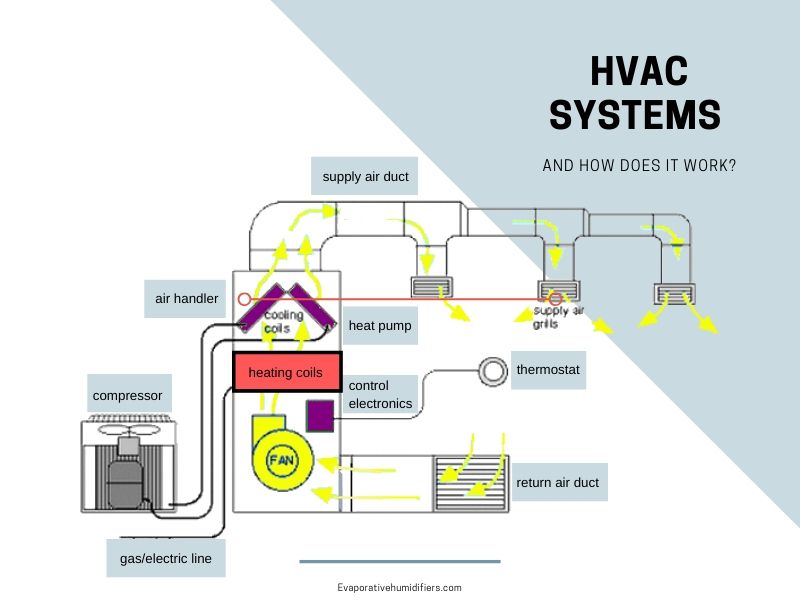Are you tired of constantly adjusting your thermostat to find the perfect temperature? Have you noticed a significant increase in your energy bills despite using a programmable thermostat? These are just a few of the common problems that people face when dealing with HVAC networks.
HVAC networks are complex systems that provide heating, ventilation, and air conditioning to homes and businesses. They can be difficult to understand and maintain, and many people struggle to keep them running efficiently.
The target of HVAC networks is to regulate the indoor temperature, humidity, and air quality of a building. These networks consist of various components, including air conditioning units, furnaces, ducts, thermostats, and sensors. Proper maintenance and regular inspections are critical for the effective functioning of an HVAC network.
In summary, HVAC networks are essential for maintaining comfortable living and working conditions. However, they can be complicated and require proper maintenance. Key components of HVAC networks include air conditioning units, furnaces, ducts, thermostats, and sensors.
What is HVAC Network and its target?
HVAC network refers to a system that regulates the temperature, humidity, and air quality of a building. It targets providing comfortable conditions for the occupants of the building.
My personal experience with HVAC networks has highlighted the importance of regular maintenance. Neglecting to perform maintenance tasks can lead to costly repairs and decreased efficiency. Additionally, upgrading to a smart thermostat has significantly improved my energy efficiency and reduced my monthly bills.
Common Problems with HVAC Networks
One of the most common problems with HVAC networks is improper maintenance. When the system is not maintained correctly, it can lead to decreased efficiency and increased energy bills. Another common issue is incorrect installation. Even minor mistakes can lead to significant problems with the network's overall performance.
Benefits of Proper HVAC Network Maintenance
Regular HVAC network maintenance can provide a range of benefits. It can improve energy efficiency, reduce energy bills, and extend the life of the system. It also helps prevent breakdowns and costly repairs. Regular maintenance tasks include replacing air filters, cleaning ducts, and inspecting the system for damage.
Upgrading to a Smart Thermostat
One of the easiest ways to improve the efficiency of your HVAC network is to upgrade to a smart thermostat. These thermostats can be programmed to adjust the temperature based on your schedule, reducing energy waste. They can also be controlled remotely, providing flexibility and convenience. Additionally, smart thermostats can provide insights into your energy use, helping you identify opportunities for additional energy savings.
Q&A about HVAC Networks
Q: How often should I replace my air filters?
A: Air filters should be replaced every one to three months, depending on usage and the type of filter.
Q: How can I tell if my HVAC network needs repair?
A: Some signs that your HVAC network may need repair include strange noises, inconsistent temperatures, and increased energy bills.
Q: What is involved in a typical maintenance visit?
A: A typical maintenance visit includes tasks such as replacing air filters, cleaning the system, inspecting ducts for leaks, and checking refrigerant levels.
Q: Can I perform HVAC network maintenance myself?
A: While there are maintenance tasks that can be performed by homeowners, such as replacing air filters and cleaning ducts, it is recommended to have a professional perform a comprehensive inspection at least once a year.
Conclusion of HVAC Network
HVAC networks are essential for maintaining comfortable indoor conditions in homes and businesses. Proper maintenance and regular inspections are crucial for efficient operation and preventing costly repairs. Upgrading to a smart thermostat and performing regular maintenance tasks can improve energy efficiency, reduce energy bills, and extend the life of the system.
Gallery
Basics Of HVAC Systems: How They Work? - Heald Mechanical

Photo Credit by: bing.com / hvac system systems basics work they water air mechanical duct installation
When Do Variable Refrigerant Flow (VRF) Systems Make Sense?

Photo Credit by: bing.com / vrf refrigerant systems variable flow make sense when pe leed assoc angle kevin green
Data Center Building HVAC, Water Drop Diagram, Computer Network

Photo Credit by: bing.com /
HVAC System - How Does It Work, Components And Maintenance Tips

Photo Credit by: bing.com / hvac system work does working components systems air
CADprofi HVAC & Piping - Network License
Photo Credit by: bing.com / network hvac architectural license piping electrical series cp symbols single specification description